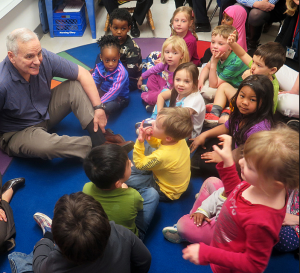 Governor Dayton has been very clear that early education investment is his Administration’s top priority. But you’d never know it by looking at the budget proposals coming out of the Minnesota Legislature so far this year.
Governor Dayton has been very clear that early education investment is his Administration’s top priority. But you’d never know it by looking at the budget proposals coming out of the Minnesota Legislature so far this year.
This Governor sounds very serious about making early education his legacy. Early in his term, the Dayton Administration brought two proven early education programs statewide — Early Learning Scholarships and the Parent Aware program. Last year, he continually demanded larger investments in early education, and expressed bitter disappointment when the investment wasn’t as large as he had wanted.
Since then, he has repeatedly made it very clear that more early education investment is needed. Last summer, just a few weeks after the special session ended, the Governor told reporters:
“We’re going to keep making that the priority of my administration, and anything else is going to have to take second place and not precede it.”
He then went on to make a pledge that caught the attention of a lot of reporters and legislators who would like to spend their summer away from the Capitol this year.
“I will not sign a tax bill that does not have an equitable amount in it overall for early childhood and for continuing the progress that we’re made here.”
This winter, the Governor hasn’t let up. On February 28th, the Pioneer Press reported:
In a news conference last week, Dayton said that when it comes to closing student achievement gaps, addressing early learning “is the most important thing we can do.”
There’s compelling evidence to back up the Governor’s prioritization of early education. Research by economists at the Federal Reserve Bank of Minneapolis found that helping low-income children access high quality early education programs can yield up to $16 in societal returns for every $1 spent. The returns mostly comes in the form of a lifetime of taxpayer expenses foregone, such as future taxpayer bills for remedial education, social services, income supports, health care, law enforcement and prisons.
The part that many miss about this oft-cited research is that the investment must meet two important criteria in order for the returns to materialize. First, the investment has to be directed at low-income children. Second, it has to be in providing access to high quality programs, the types of places that actually get kids ready for school. Investing in children whose family can already afford good programs, or in lower quality programs, doesn’t yield the big returns.
In other words, how lawmakers invest matters, not just what amount they invest.
How Much Is An “Equitable Amount?”
Still, with 89% of low-income pre-schoolers unable to obtain Early Learning Scholarships due to insufficient funding, and Minnesota having some of the worst achievement gaps in the nation, the size of the investment definitely matters. And with just a few days left in the session, the DFL Governor doesn’t seem to be getting much DFL legislative support for his top priority.
The DFL-controlled Senate is proposing to invest only 3.9% of the $900 million surplus on their Governor’s number one priority. That is less than half what the Governor recommends. Meanwhile, the GOP-controlled Minnesota House is proposing to spend just 0.5% of the surplus on early education, less than one-twentieth of what the Governor proposes.
In his budget recommendations, the Governor proposed spending 10.9% of the budget surplus ($98.4 million) on early care and education. Even that amount is not a particularly large sum for something the Governor has identified as “the priority of my administration,” but it is by far the most robust investment that has been proposed this year.
Somewhere in the vast gap between the House’s proposed 0.2% of the surplus and the Administration’s proposed 10.9% of the surplus is what the man in possession of the veto will consider an “equitable amount” for early education programs. If the Governor fights for his number one priority the way he did last year, reporters and legislators may not want to make their summer vacation plans quite yet.
– Loveland
Disclosure: I’m a communications consultant who contracts with a nonprofit organization that agrees with some but not all of Governor Dayton’s early education proposals, and some but not all of the bipartisan Legislature’s early education proposals. This post reflects my personal views, not necessarily that organization’s views.
